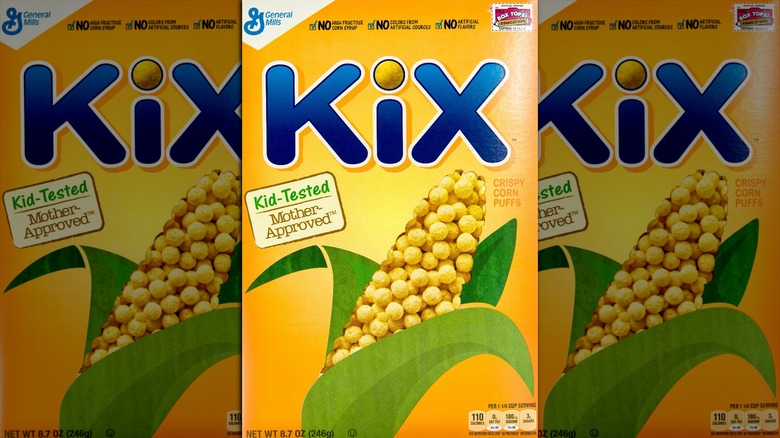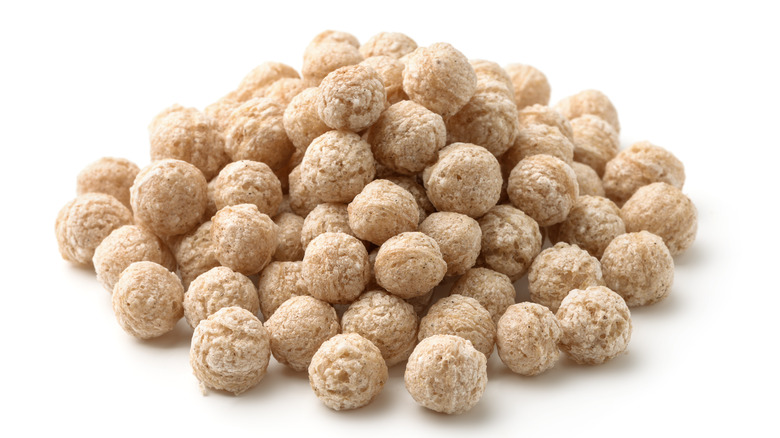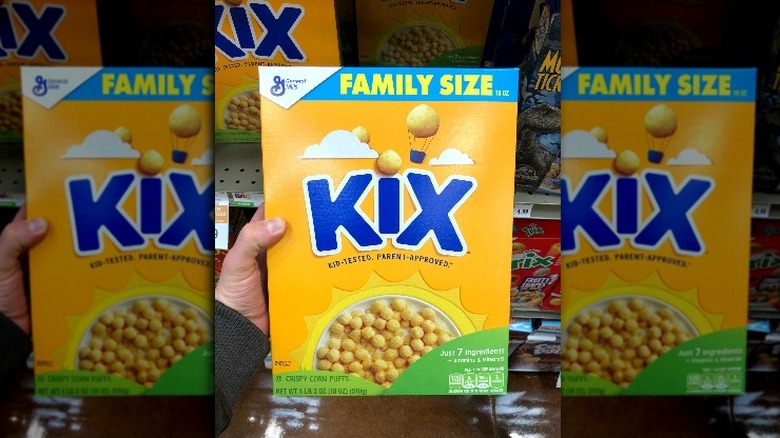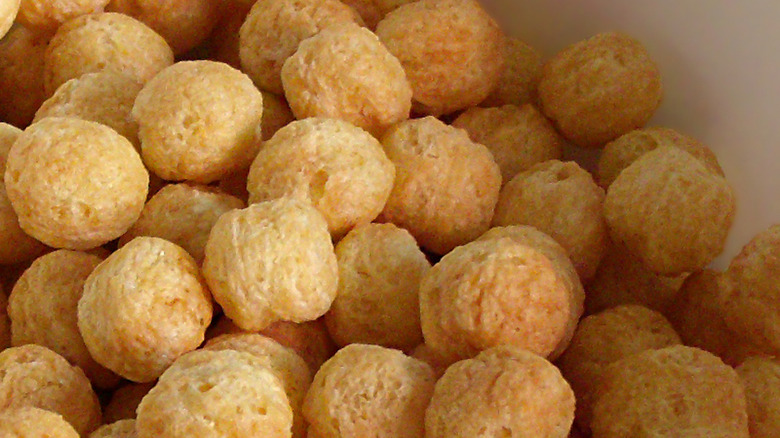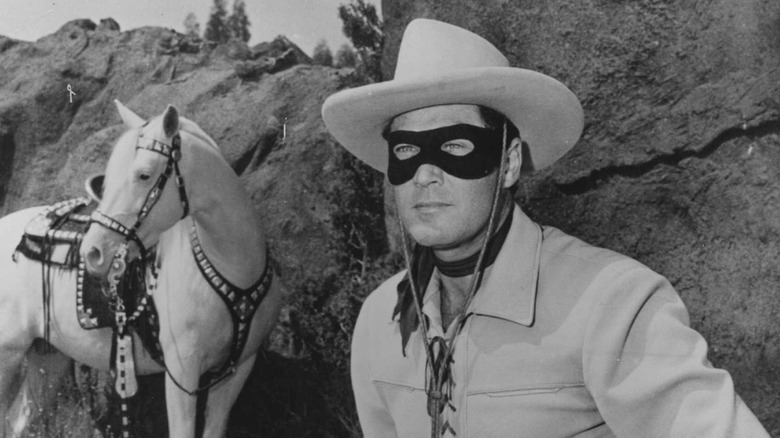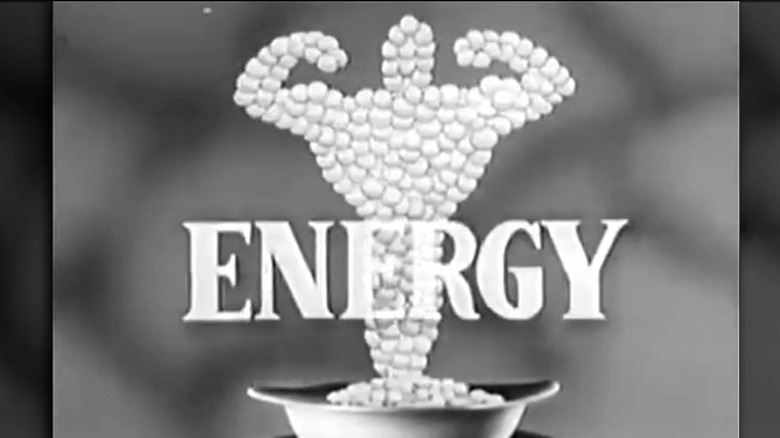The Untold Truth Of Kix Cereal
Kix has held its place as a supermarket staple for more than 80 years (via General Mills). It might not be as colorful as its spin-off Trix, or even as popular as its cooler sibling Cheerios, but Kix has a charm of its own and a rich history. And it's not intimidated by its rainbow-colored competition, either — breakfast treats such as Froot Loops or Apple Jacks. Kix has retained its pale brown color and has always held to its niche in the market as a healthy cereal for kids.
Over the years, the Kix repertoire has expanded to include Berry Berry and Honey flavors. Berry Berry Kix included a grape-like cluster of corn puffs infused with the flavors of grapes, raspberries, strawberries, and cherries (via Mr. Breakfast). Honey Kix was "lightly sweetened" with sugar, honey, and brown sugar syrup, per Fooducate. General Mills even brings some social awareness to the brand. The company has been striving to get all of its corn for Kix and other products from farms with sustainable practices, according to a 2018 blog post from the company. Some of the honey for Honey Kix comes from women-led small businesses in Sierra Leone, according to a separate General Mills blog post.
Setting aside these virtuous efforts, how did Kix make it this far while being so ... boring? Its secret may lie in how well it holds up in milk.
Kix was introduced during the Great Depression
General Mills started off as a flour-milling company under Cadwallader Washburn in 1866, according to the Wisconsin Historical Society. Washburn grew his business by forming partnerships. It all started with Washburn's merger with milling magnate John Crosby in 1877 to form the Washburn-Crosby Company (via Minnesota Historical Society). The company became General Mills in 1928 when Washburn-Crosby merged with 28 other mills.
When the company entered the New York Stock Exchange later that year, one share of General Mills was priced at $65, per the General Mills website. All was looking up, but not for long. The stock market crashed the following year, sending the United States into the Great Depression. James Ford Bell, who was the president of the company at the time, did not believe in cutting his employees' wages. Instead, the company started introducing new products to drive the business. One of these products came out of General Mills' research lab in the 1930s. It was a new kind of puffed corn cereal called Kix.
Kix was made with breakthrough cereal technology
According to The Atlantic, hundreds of cereal manufacturing companies blossomed around the turn of the 20th century, all peddling healthy and convenient — if not always delicious — wheat and corn cereals. Washburn-Crosby, the General Mills predecessor, was late to the game when it introduced its first ready-to-eat cereal in 1921. The new product, Whole Wheat Flakes, was quickly renamed Wheaties in 1924 (via General Mills). When Kix was introduced, in 1937 (via Kix Cereal), there was nothing like it on the market. Kix was the first puffed corn cereal ever made, according to a General Mills blog.
By that time, Quaker had already introduced puffed rice and wheat. These products were made possible by a botanist named Alexander Anderson. According to The New Yorker, Anderson discovered a way to bake wheat and rice that would make them puff up to be many times larger than their original size.
As told in the book "Cerealizing America," by Scott Bruce and Bill Crawford, Quaker had the patent for this puffing method until 1929. When it expired, General Mills engineer Thomas R. James jumped on it and developed a "puffing gun" that spit out batches of round puffed corn pellets that came to be called Kix. A few years later, after a few adjustments, General Mills put oat dough in the machine to make what would eventually be called Cheerios.
Kix claimed to be 83% energy food
In the 1920s, General Mills assigned a team of researchers to understand what consumers looked for in a cereal. What they learned was that people wanted two things General Mills' competitors weren't offering: a cereal that didn't turn soggy in milk and more vitamins (via "Cerealizing America"). Kix was engineered in the General Mills' research lab to fulfill these wants. In a 1938 ad for its exciting new bubble-shaped cereal, General Mills claimed that "it doesn't get all soaked in milk or cream as flat flake cereals do. Scientific tests prove that" (via Tumblr). The corn bubbles were coated with vitamins B and D, calcium and phosphorus, and marketed as food that "helps in 'balancing'" your diet. A TV commercial aired in the 1950s declared that Kix was a "food for action" that had 83% energy (via YouTube).
It wasn't until 1979 that General Mills adopted Kix's famous slogan, "Kid-tested. Mother-approved," which has stood the test of time and continues to remain Kix's catchphrase, except for a small change (via Cereal Guru). Ever since 2018, as General Mills announced on Twitter, the Kix slogan has been "Kid-tested. Parent-approved."
All parental units are so approving because Kix is, in fact, a healthier cereal. One cup of Kix (without milk) contains only 3.3 grams of sugar, according to the University of Rochester Medical Center. Compare that to Kix's more colorful sibling, Trix, which the Medical Center reports as having 13.2 grams of sugar per cup.
'The Lone Ranger' boosted Kix sales in the 1940s
General Mills has been putting free toys and other sorts of prizes inside (or on) cereal boxes since 1933 (via Collectors Weekly). It started with cards related to the Skippy comic strip character printed on the back of Wheaties boxes. Sometimes the prizes, called premiums, would be mailed to eager children after they sent a little pocket change and a box top.
Kix became the go-to cereal for premiums related to the popular "Lone Ranger" radio series in 1941 (via Jim Ramsburg's GOld Time Radio). Kids who loved both Kix and "The Lone Ranger" could exchange cereal box tops for Lone Ranger safety belts, silver bullet compasses, weather rings, and much more over the years. Kix set a record for cereal premiums in 1947, its last year as the official cereal of "The Lone Ranger." (General Mills moved the premiums to Cheerios in 1948.) The record-breaking offer was a glow-in-the-dark Lone Ranger atomic-bomb ring for 15 cents and a box top. General Mills got 1.6 million box tops back, along with $240,000 in change. Needless to say, kids got their fill of Kix in 1947.
Kix cereal never had a popular mascot
The faces of some cereal mascots are immediately recognizable. Take the Quaker Oats guy, for example, or the elves Snap, Crackle, and Pop, who grace boxes of Rice Krispies. Kix's Puffman, on the other hand, was never a household name. In 1955, Puffman appeared in a TV ad, helping a boy execute a swan dive (via Dailymotion). But as you can imagine, a man-shaped conglomeration of corn puffs didn't have the potential to be another Tony the Tiger.
The Kix brand made some halfhearted efforts to adopt new mascots in the 1960s, according to the YouTube channel Cereal Time TV. They included a kid in pajamas, a farmer kid, and a weird beatnik with goatee, beret, and saxophone who had no body — just feet attached to his head. Did we mention there was a Kix cartoon cow? In one TV ad, spotlighted by Cereal Time TV, the cow punched an unfortunate individual who had dared to complain that the cow's milk made his corn flakes soggy. (After knocking the guy unconscious, the cow suggested he switch to Kix.)
Compared to other brands, Kix didn't seem interested in impressing kids with its cereal box. Cereal Time TV noted that back in the 1980s, a box of Kix went out of its way to be boring. By the 1990s, however, Kix seemed to have learned a little kid appeal, introducing colorful boxes with puzzles and mazes for its Berry Berry cereal.
